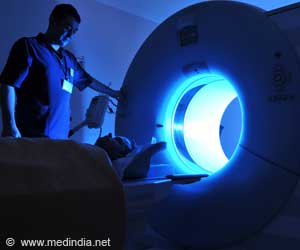Two commonly used tests to predict the risk of preterm birth found to be ineffective in routine screening of first-time pregnancies.
- Two tests including measuring the length of the cervix and fetal fibronectin levels were previously considered to be key indicators of impending preterm labor.
- Recent findings propose that these tests fail to identify adequate cases of preterm births.
- These tests cannot be used for widespread routine screening of first-time pregnancies.
Probable Factors of Pre-term Births
Previous studies have indicated that the two signs of impending preterm birth could be:- short cervix during pregnancy
- presence of fetal fibronectin in the vagina in early pregnancy
Fetal fibronectin is a glue-like protein that secures the amniotic sac to the inside of the uterus. Fetal fibronectin is considered to be high if the level is 50 ng/mL or greater.
The amniotic sac is the fluid-filled membrane that protects the growing fetus. It breaks down and can be detected in vaginal discharge toward the end of pregnancy.
The study focused on spontaneous preterm delivery from labor that occurs naturally, and initiated through a cesarean section or induced labor for medical reasons.
Pre-term Delivery
Regular contractions that begin in the uterus before 37 weeks of pregnancy resulting in the opening of the cervix is defined as preterm labor. Full-term pregnancy is carried up to 40 weeks. Preterm labor increases health risks for the baby.Study
Researchers included 9,410 pregnant women with a single fetus at eight research centers in the United States. The study was conducted as part of the Nulliparous Pregnancy Outcomes Study: Monitoring Mothers-to-Be (nuMoM2b) and was published in the Journal of the American Medical Association, JAMA.- 16 to 22 weeks of pregnancy
- 22 to 31 weeks of pregnancy
- 6 to 14 weeks of pregnancy
- 16 to 22 weeks of pregnancy
- 22 to 30 weeks of pregnancy
Results
The two common tests that were used in this study that screened women through their pregnancy only helped identify a small proportion of the women who would eventually deliver preterm.In the test that measures cervical length at 16 to 22 weeks, shorter cervix was found in 35 of 439 women (8%) who delivered spontaneously before the 37th week of pregnancy.
When the test was conducted at 22 to 31 weeks, shorter cervix was found in 94 of 403 women (23.3%) who delivered prematurely.
For the fibronectin test at 16 to 22 weeks, fibronectin levels were higher in 30 of 410 women (7.3%) who delivered spontaneously before the 37th week.
On testing at 22 to 30 weeks, fibronectin levels were higher in 31 of 384 women (8.1%) who delivered prematurely .
On combining the results of the two tests, no significant difference in results was observed.
The researchers thus concluded that irrespective of whether the two tests were conducted separately or combined, the methods fail to recognize adequate number of preterm births that is needed to support routine screening of first-time pregnancies.
"These methods of assessing women in their first pregnancy do not identify most of those who will later go on to have a spontaneous preterm delivery," said the study's senior author, Uma Reddy, M.D., of the Pregnancy and Perinatology Branch at NIH's Eunice Kennedy Shriver National Institute of Child Health and Human Development.
"There is a need to develop better screening tests that can be performed early in pregnancy." Reddy added.
References:
- Uma Reddy et al.Predictive accuracy of serial transvaginal cervical length by ultrasound and quantitative vaginal fetal fibronectin for spontaneous preterm birth among nulliparous women. Journal of the American Medical Association; (2017) Doi:10.1001/jama.2017.1373.
- Fetal fibronectin test - (http://www.mayoclinic.org/tests-procedures/fetal-fibronectin/home/ovc-20201225)
- Preterm labor - (http://www.mayoclinic.org/diseases-conditions/preterm-labor/basics/definition/con-20035359)
Source-Medindia










